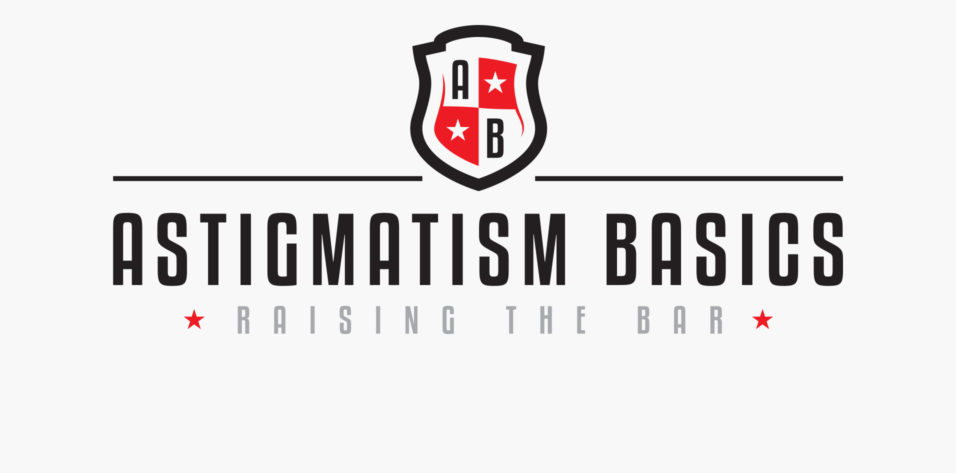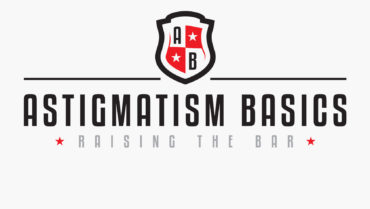Treating astigmatism during cataract surgery is a major no-brainer. Think about it: Would you ever prescribe a spectacle lens to a patient with significant astigmatism and leave out the cylinder? I hope not. So, if we don’t leave the cylinder out of spectacle lenses that sit a half-inch in front of the eyes and are easily smudged and broken, why on earth would we leave it out of the permanent IOL we give to patients, who will live with that lens for the rest of their lives after cataract surgery?
The benefits of astigmatism correction are unequivocal, so why are so few patients effectively educated about this solution? And why is it that, even when patients are properly educated, they still don’t adopt the technology? In my experience, the answers to these questions can be broken down into four roadblocks, which are overviewed below. (In my next column, I’ll discuss the four tools I use to overcome them.)

ROADBLOCK NO. 1: NOT A PTERYGIUM
If you were to show the average patient two pictures of an eye, one with a cataract and one with a pterygium, and ask, “Which of the following pictures shows an eye with a cataract?” how many would choose the picture with the pterygium? If your patients are like mine, the vast majority incorrectly think that a cataract is a growth or film over the eye, and they’d pick the pterygium.
This is extremely important. If a patient believes that a cataract is a film over the top of the eye and has no idea that we all have a tiny crystalline lens underneath, how would it make sense that he or she needs any lens implant at all, let alone a premium one? This basic anatomy lesson is fundamental to helping patients understand that there is a decision to be made about what type of IOL they want to replace their cataract. It’s up to us as physicians to spend sufficient time explaining this so that patients fully understand this once-in-a-lifetime decision.

ROADBLOCK NO. 2: EXPECTATIONS OF COST
Multiple choice question: Which of the following is the most common reason your patients do not adopt toric IOLs, even if recommended based on their clinical examination and desires?
(A) Lack of awareness despite proper education;
(B) They prefer to wear glasses all the time; or
(C) It costs more than they expected to pay.
If your patients are like mine, the most common answer is C. But notice, it isn’t cost itself that is the deterrent—it’s that it costs more than they expected to pay. Let’s dig into that and why it’s relevant.
Have you ever thought about why patients are conditioned to believe that correcting astigmatism during cataract surgery will cost less than it does? A lot of it has to do with what I call The Great 20/40 Myth. The Great 20/40 Myth is the false idea that insurance won’t cover cataract surgery unless the patient’s visual acuity can’t be corrected to better than 20/40. If you believe this is the case, ask yourself, have you ever looked up the medical necessity guidelines? Here is what Medicare says about it for reference. Notice, there is no specific visual acuity requirement—it doesn’t say 20/40, or 20/30, or 20/50, or 20/anything.
Why does this matter in the context of toric IOLs and patient expectations around cost? Think about it: If you’ve been telling a patient who can’t drive at night anymore that insurance won’t pay for cataract surgery because he or she is still correctable to 20/40, you are effectively price anchoring the patient to only that which insurance will “allow.” Imagine what that patient will think 5 years later when you finally say, “Congratulations, your insurance will now pay for your cataract surgery. By the way, it’s going to cost you a few thousand dollars on top of what insurance pays because insurance doesn’t cover the premium IOL you need.” The patient will think, “What the heck have I been waiting for?!” And the reality is, there was no requirement for his or her vision to be worse than 20/40 in the first place. Please do not be hoodwinked by The Great 20/40 Myth any longer (and look it up if you don’t believe me).

ROADBLOCK NO. 3: WHO’S THE BOSS, ANYWAY?
I believe that we as a society have lost sight of who controls the decisions around what’s best for our individual health care needs. Remember, we the consumers are also the customers. We pay our insurance premiums, deductibles, and copays religiously every month, often to the tune of several thousand dollars every year. So why is it that we allow something we buy to dictate what we can and cannot do with our bodies? Hint: Insurance is not the boss; patients are.

ROADBLOCK NO. 4: THE NOSY NEIGHBOR
Nosy Neighbor is the person who messes it up for our patients by saying things like, “I don’t know what your doctor is talking about. I had cataract surgery, and I don’t have to wear glasses anymore. Plus, my insurance paid for the whole thing.” Nosy Neighbor can take the form of a friend at church, a bingo partner, or even a patient’s spouse. But what Nosy Neighbor doesn’t understand is that, although he or she may have been a high hyperope with no significant preoperative corneal astigmatism, our patient has 2.50 D of corneal cylinder and is an engineer who requires 20/15 visual acuity to be happy. When Nosy Neighbor undermines your clinical recommendation for a toric IOL, he or she is inadvertently doing a disservice to his or her friend and your patient.
CONCLUSION
In my practice, we have developed ways to communicate the value and necessity of astigmatism treatment during cataract surgery to help reduce the impact of these and other roadblocks. But first understanding the sources of the problem and the obstacles that patients encounter is paramount. I hope you’ll read my followup column, where I’ll outline the four tools we use to overcome these common roadblocks.



